INSIDE THE AWARD-WINNING RENOVATION OF ISTROS, A HISTORIC 42M SUPERYACHT.
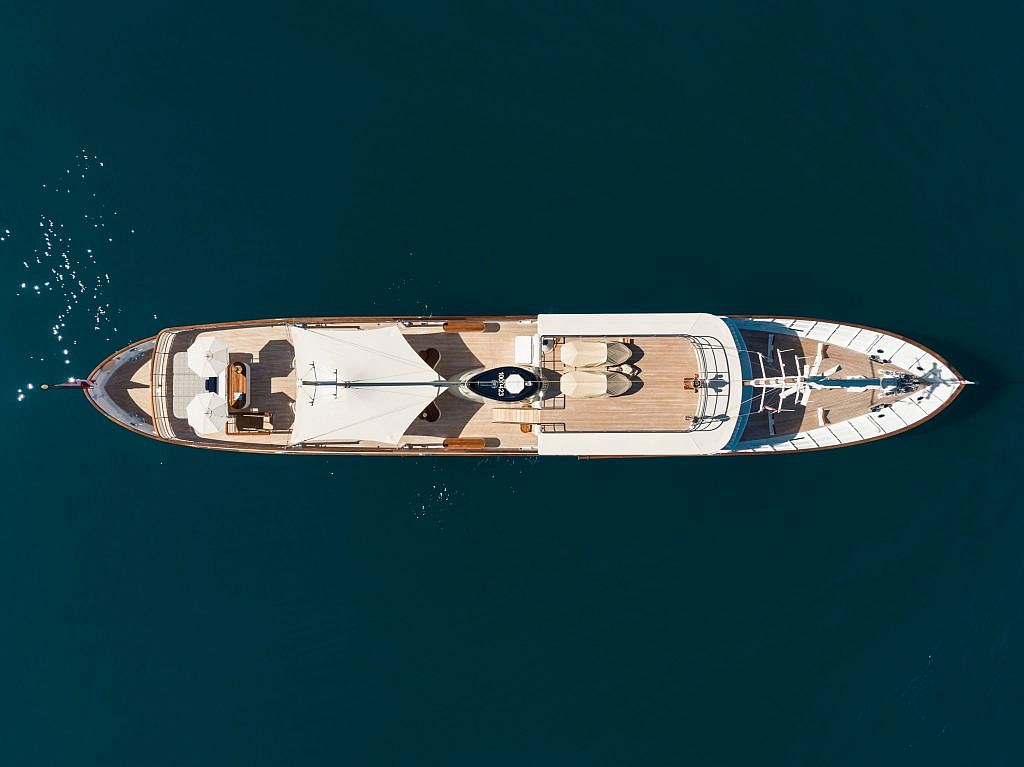
There’s a certain breed of humans that wishes to leave a mark as a person of unique style, universally pledged to customizing objects as extensions of one’s persona. Those of us who are afflicted started young. We changed the color of our shoelaces, put stickers on our bikes and skateboards, and made sure our closets were something of individuality. We desired to be different and put our mark of personalization on objects of value that we acquired.
As adults, we tend to make our mark on things of more substance, such as homes and cars. We work with expert architects and craftspeople in a variety of fields to get our figurative fingerprints imprinted on our assets, in hopes that they will outlive us and perhaps remain a legacy heirloom to be passed down through our families for generations to come.
This is not a new concept, as we have been hardwired over thousands of years to make personalized impressions upon society. I’d like to think that our predecessors, obsessed with the same predisposition toward beautiful objects, have genetically created a “type” of person who just loves the challenge of making luxurious objects of beauty, superior engineering, and refinement. The best possess famous names: Frank Lloyd Wright, Ferrari, Rolex, Eames, Vuitton, and Porsche, to name but a few. They’re pioneers renowned for immense talent and blessed with the propensity for taking enormous chances in navigating the delicate and dangerous world of entrepreneurship, simply for the love of engineering and design.
Anyone paying attention to the classic car market has witnessed a massive movement toward restoration and customization, sometimes both, aptly titled “restomods.” Restomods are vehicles restored without adhering to original factory specifications, often using modern technologies to improve and enhance the performance. There’s something inherently romantic and deeply interesting about the design and craftsmanship of bygone eras that will never be replicated.
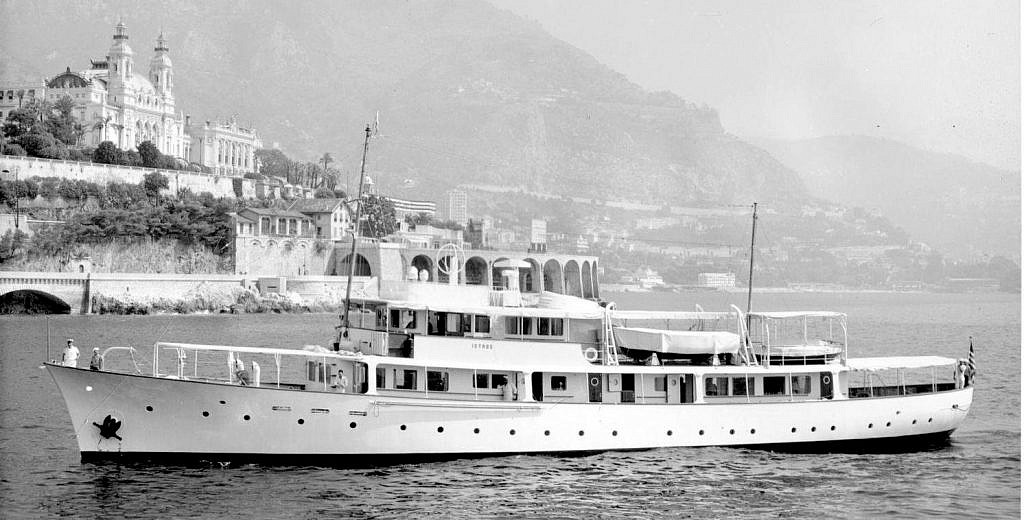
So once one has the house, designed and decorated, with a garage full of classic and beautifully articulated autos, what’s next? If you are fortunate enough to live by the sea, or at least a substantial lake, the obvious answer is a yacht. To order a custom yacht would be a relatively easy endeavor, but to restore a classic yacht could be an (arduous) adventure of a lifetime. Buying a classic yacht is not buying a vessel to simply sail the seven seas, but rather an endeavor in both customization and the preservation of history. A nautical restomod, of sorts.
Among the finest examples of a classic yacht retrofitted with modern technologies is Istros, a 138-foot beauty that was recently completed after an extensive refurbishment. Restoring a classic yacht is not for the weak of spirit. Becoming an expert in refinishing, navigation, diesel engines, osmosis, electrical works, and plumbing is a multiyear deep dive that most do not have the experience, time, or patience to achieve. It requires a master yacht builder, a well-seasoned project manager, and a talented captain — and Istros employed the best. But before we embark on Istros’ current state, we must explore the past.
After the Second World War and during a booming global economy, Greek shipping magnates Aristotle Onassis, Stavros Niarchos, and the Pappadakis family all participated in building elaborate and beautifully appointed luxury yachts. Italy’s Amalfi Coast, the French Riviera, the Greek Isles, and beyond all became the nautical playground of the rich and famous.
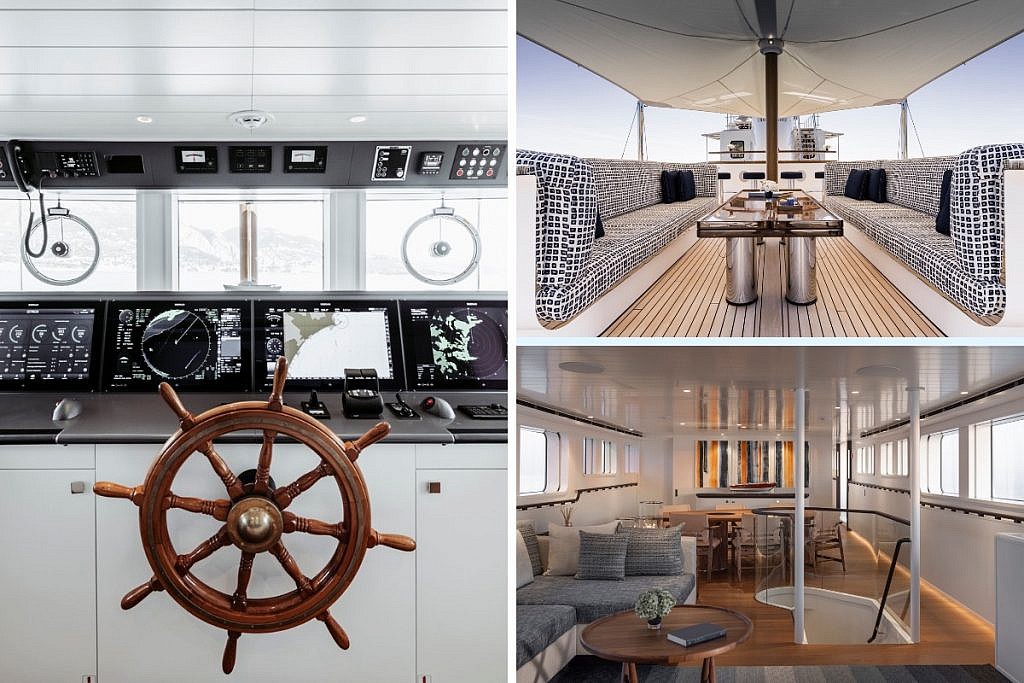
The Pappadakis family commissioned the Istros to be built by De Vries Lentsch, a premier builder of high-class motor yachts, and after a year of construction, the mid-century masterpiece was completed in 1954. De Vries Lentsch started in 1878 by building and designing wooden row boats for the canals of Amsterdam, as well as lifeboats for mega ships like the Titanic. One thing that is certain about a shipbuilder is that true experience is irreplaceable. Voyages will almost surely be tested by adverse weather, and knowing that a builder has 150 years of trial and error is particularly comforting, especially knowing that the “error” part could end in a cruel death for you and your family. Anyway, I digress….
At the time, Istros was the largest motor yacht built in the Netherlands. The 138-foot vessel has a beam of 22.5 feet, a draft of 9.3 feet, and a volume of 270 GT. The superyacht included modern mechanics and accouterments such as dual 18-ton 500 hp diesel engines, fashionable white telephones, violet-tinted restrooms, and a new state-of-the-art technology known as “radar.” The boat was recognized as an instant classic and its design attributes as the pinnacle of De Vries Lentsch significant design and build capabilities.
For the last half of the century, Istros was in good order and a constant fixture of the Mediterranean jet-set crowd. The boat was remodeled in the late ’90s and subsequently won the 2001 Monaco Yacht Club Prada Classic Yacht Show. Eventually, as do many yacht owners, Istros aged and deteriorated to the point of disrepair. In 2015, the boat was discovered by the current owner and his captain of ten years, Tristan Le Brun, rusting in the Maltese port of Valletta, and, thus, Istros became the subject of a major renovation.
For those of you who have never been on a vintage yacht, they are filled with noise, foul smells, toxic emissions, and constant vibrations. This may be acceptable for a short Sunday motor down the coast for lunch, but on an extended voyage, say, from the Amalfi Coast to Mallorca, such discomforts keep most yacht owners from possessing these beautifully crafted but rough voyage relics.
For its renovation, the boat was stripped to the metal, subjected to a 3D scan, re-created, and refinished to the highest possible standards. The engine room was reconfigured, replacing the original dual 18-ton engines with 2-ton modern specimens that added 200 hp in the process. Saving 32 tons of weight in a boat seems miraculous, but in practice, it required tons of lead installed to maintain the proper ballast. The elimination of a multilevel engine room allowed for a new floor plan with added staterooms and more personal spaces. The interior, while paying homage to the original flavor, was freshly appointed by Van Geest Design, one of Amsterdam’s, and the world’s, finest nautical design firms.
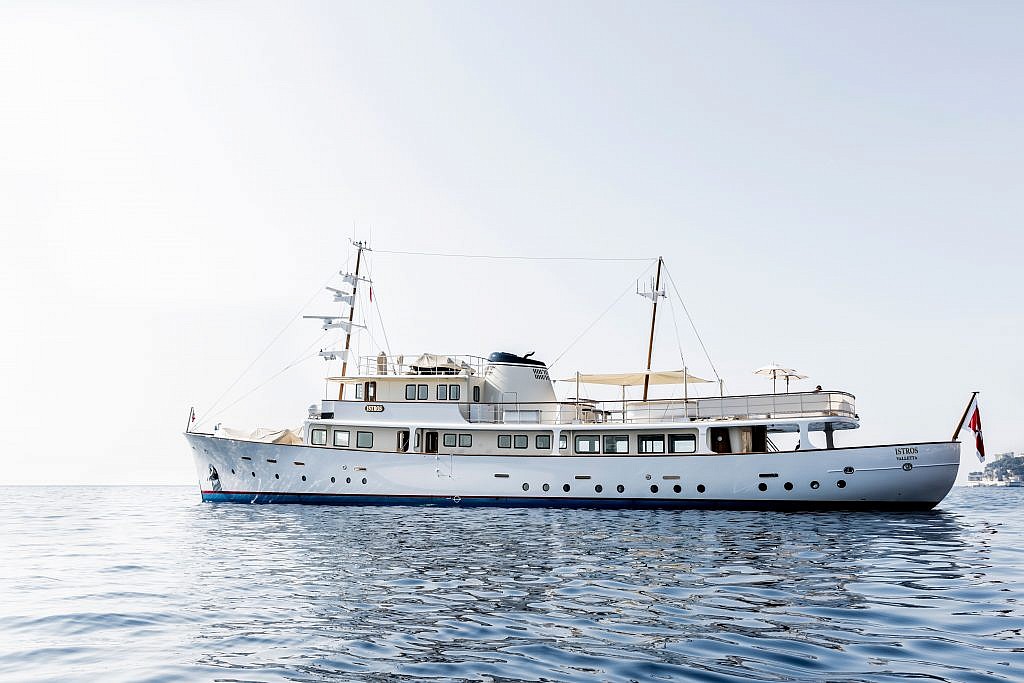
State-of-the-art technology was employed at every opportunity. Notably, a Capstone microturbine was installed to provide quiet, clean energy and vibration-free electricity. Capstone microturbines, known to be a natural gas or biogas fueled technology, can also run on a variety of fuels in a marine application, such as diesel and liquefied natural gas (LNG), and the DC power output is designed to easily integrate to a battery-based solution suited for superyachts and other large work vessels. By eliminating the AC to DC conversion step, the microturbine achieves higher efficiency and has extremely low emissions. Thanks to its inherent compact design, installing multiple units as a single redundant generating source to deliver reliable power is another one of the microturbine’s many functionalities in marine applications. This same approach was employed with the navigation systems, air-conditioning and dehumidifiers, desalination and water purifiers, entertainment and sound — all on par with the finest 2020 had to offer.
The outdoor furniture structures were constructed out of Corian, including the plush cushioned sofas that look modern but would be fitting for an early Bond film. They also designed foldable deck chairs built in teak, stainless steel, and linen. They are wide, sturdy, stable, and elegant. All fit and fixtures and have a mid-century influence but remain a mix of classic and modern — timeless but new.
The current owner’s captain, Tristan Le Brun, summarizes, “It takes intense modifications to convert a boat designed and built in the 1950s into a 2020s-caliber motor yacht, but it was never our intention to make Istros historically authentic…. We wanted the elegant exterior lines and emotions of a classic motor yacht without any of the compromises that come with a vintage vessel.”
The end result is something that is quite difficult to explain. It is nearly impossible to improve upon the work of a classic, yet when these aging beauties are reborn via well-funded designers, builders, and engineers, one can create the perfect modern yachting experience while holding onto a deeply romantic and historic semblance of an era long since past. That is, a well-articulated homage to the yacht builders of yesteryear and a modern heirloom built for generations to come. As simply stated in the Greek translation of her name, with continued love and attention, Istros will forever remain an “inspiration.”
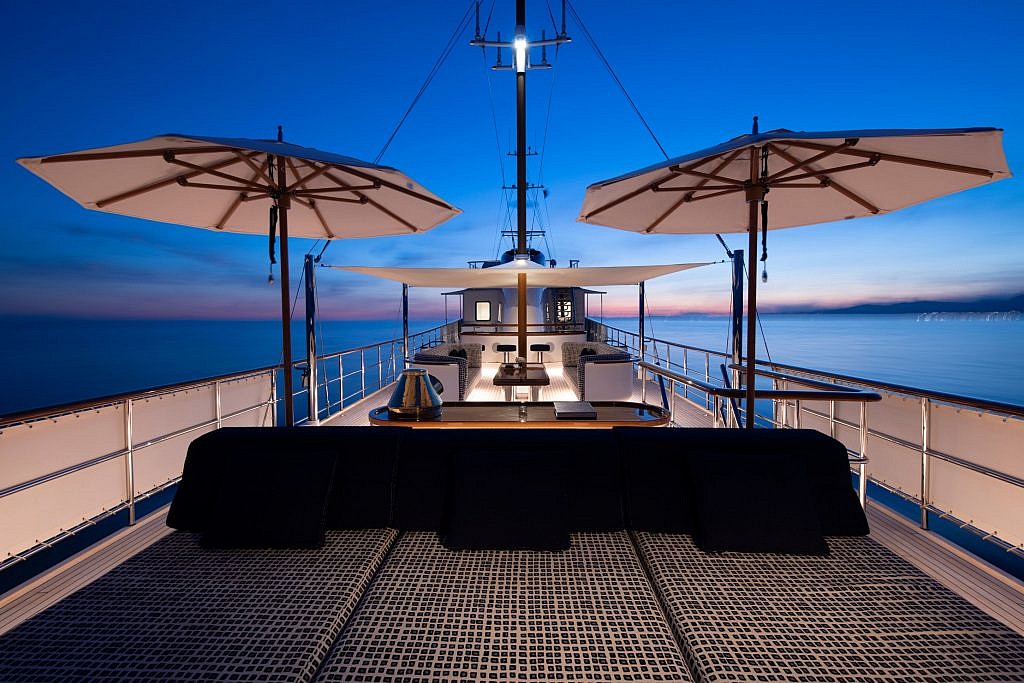
WORDS BY SHANE BAUM




